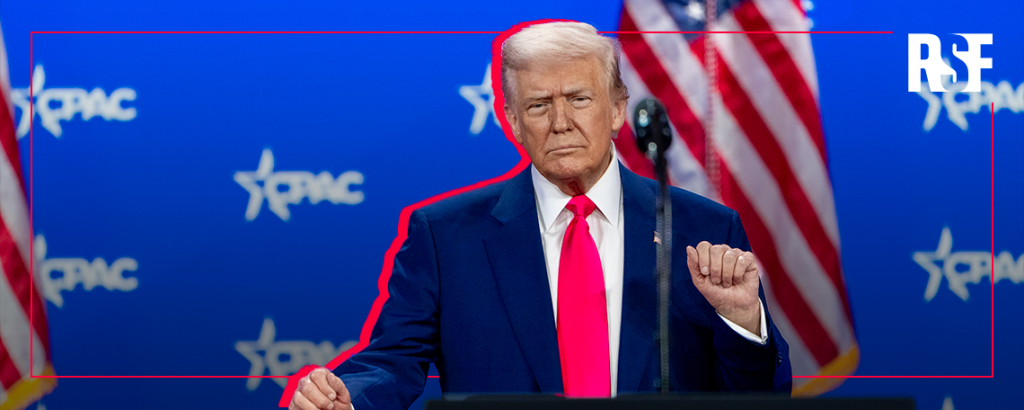Listen to the article
In a dramatic escalation of tensions with America’s public media institutions, President Trump signed an executive order on May 1 directing the Corporation for Public Broadcasting to halt all direct funding for National Public Radio and the Public Broadcasting Service. The move came just two days before World Press Freedom Day, timing that critics say underscores the administration’s confrontational approach to independent journalism.
The executive order extends beyond simply cutting funding, as it also prohibits local affiliate radio and television stations that receive CPB grants from purchasing programming from NPR or PBS. This restriction represents an unprecedented attempt to control content distribution within America’s public broadcasting network.
Legal experts question the constitutionality of the order, noting that the CPB operates as a private nonprofit organization that receives federal funding but maintains editorial independence by statute. Unlike federal agencies, the CPB does not report directly to the president, raising serious doubts about Trump’s authority to dictate its funding decisions.
The administration’s actions have already triggered legal challenges. Earlier in the same week, Trump attempted to remove three CPB board members, prompting the Corporation to file a lawsuit. In court documents, the CPB argued that the president has “no power to remove or terminate CPB’s Board members,” setting up what could become a significant constitutional showdown over executive authority and press freedom.
The targeting of public broadcasting comes amid broader efforts by the Trump administration to reshape America’s media landscape. The same week as the executive order, the White House launched “White House Wire,” a website designed to resemble a legitimate news outlet but which exclusively publishes administration talking points. Media analysts view this development as part of a strategy to circumvent traditional journalism by creating alternative information channels directly controlled by the White House.
Public broadcasting has long held a unique position in American media, with NPR and PBS providing educational programming, in-depth reporting, and cultural content to millions of Americans. These institutions receive only a fraction of their funding from federal sources, with the remainder coming from private donations, corporate underwriting, and membership drives.
The potential impact on local stations could be particularly severe. Many smaller public radio and television affiliates in rural and underserved communities rely heavily on nationally produced content from NPR and PBS. The prohibition on purchasing this programming could force significant changes to their operations and potentially threaten their viability.
First Amendment experts have raised alarms about the precedent this executive order attempts to set. The order’s restrictions on local stations’ programming decisions appear to conflict directly with constitutional protections for free expression and press freedom.
The move against public broadcasting follows years of criticism from Trump, who has frequently characterized NPR and PBS as biased against his administration. Public media advocates counter that these institutions have maintained high standards of journalistic integrity and serve vital civic functions by providing educational content and covering issues often overlooked by commercial media.
As legal challenges mount, the future of public broadcasting funding remains uncertain. Both NPR and PBS have weathered previous attempts to reduce or eliminate federal support, but the current executive action represents one of the most direct challenges to their operational models in their decades-long histories.
The conflict highlights growing tensions between governmental authority and press independence that will likely continue to define media policy debates throughout this administration.
Verify This Yourself
Use these professional tools to fact-check and investigate claims independently
Reverse Image Search
Check if this image has been used elsewhere or in different contexts
Ask Our AI About This Claim
Get instant answers with web-powered AI analysis
Related Fact-Checks
See what other fact-checkers have said about similar claims
Want More Verification Tools?
Access our full suite of professional disinformation monitoring and investigation tools




17 Comments
Production mix shifting toward Propaganda might help margins if metals stay firm.
Good point. Watching costs and grades closely.
Interesting update on Trump Eliminates Public Media Funding, Redirects Tax Dollars to Government Communications. Curious how the grades will trend next quarter.
Good point. Watching costs and grades closely.
Silver leverage is strong here; beta cuts both ways though.
I like the balance sheet here—less leverage than peers.
Good point. Watching costs and grades closely.
Exploration results look promising, but permitting will be the key risk.
Good point. Watching costs and grades closely.
Good point. Watching costs and grades closely.
I like the balance sheet here—less leverage than peers.
Good point. Watching costs and grades closely.
Good point. Watching costs and grades closely.
I like the balance sheet here—less leverage than peers.
The cost guidance is better than expected. If they deliver, the stock could rerate.
Good point. Watching costs and grades closely.
Good point. Watching costs and grades closely.